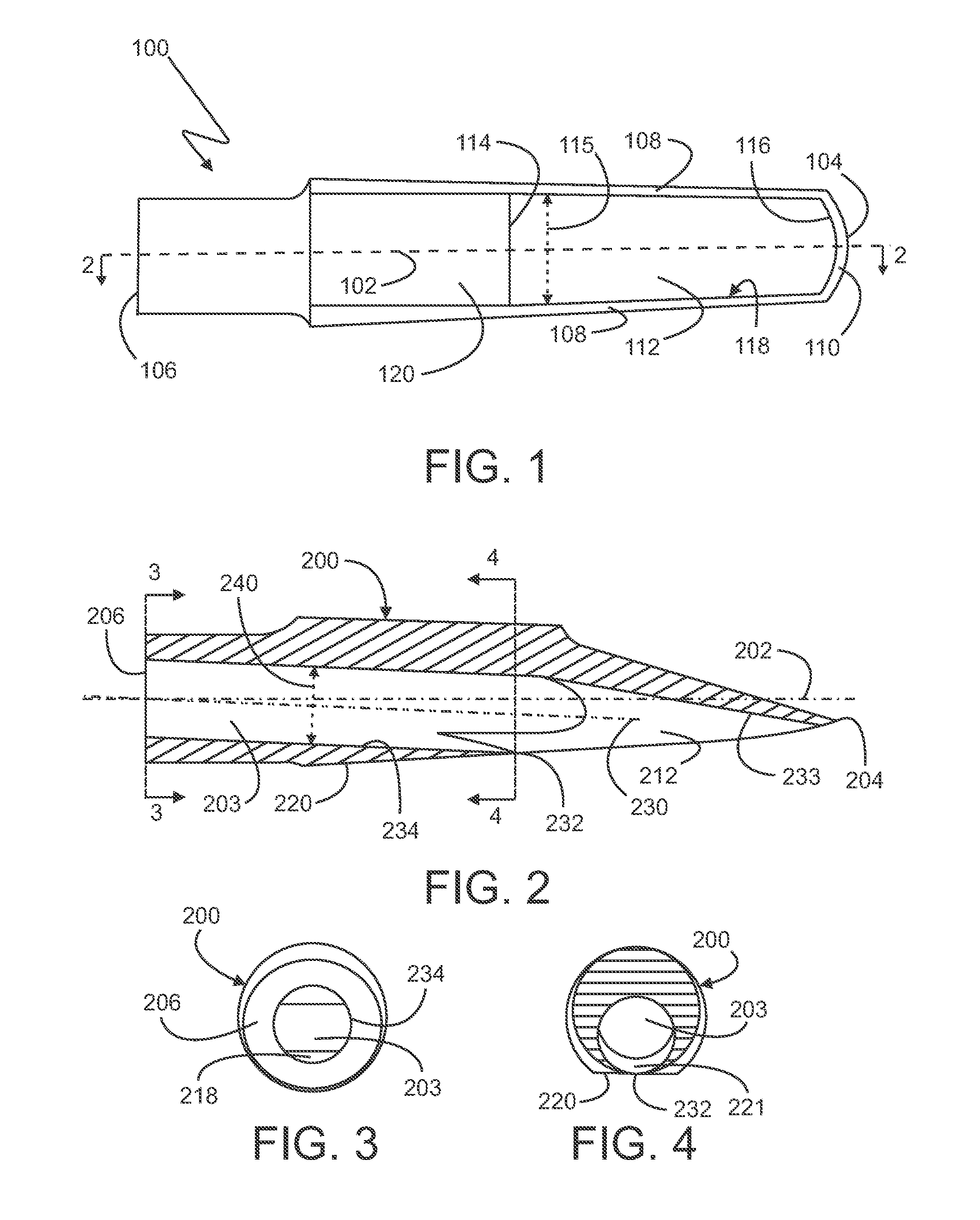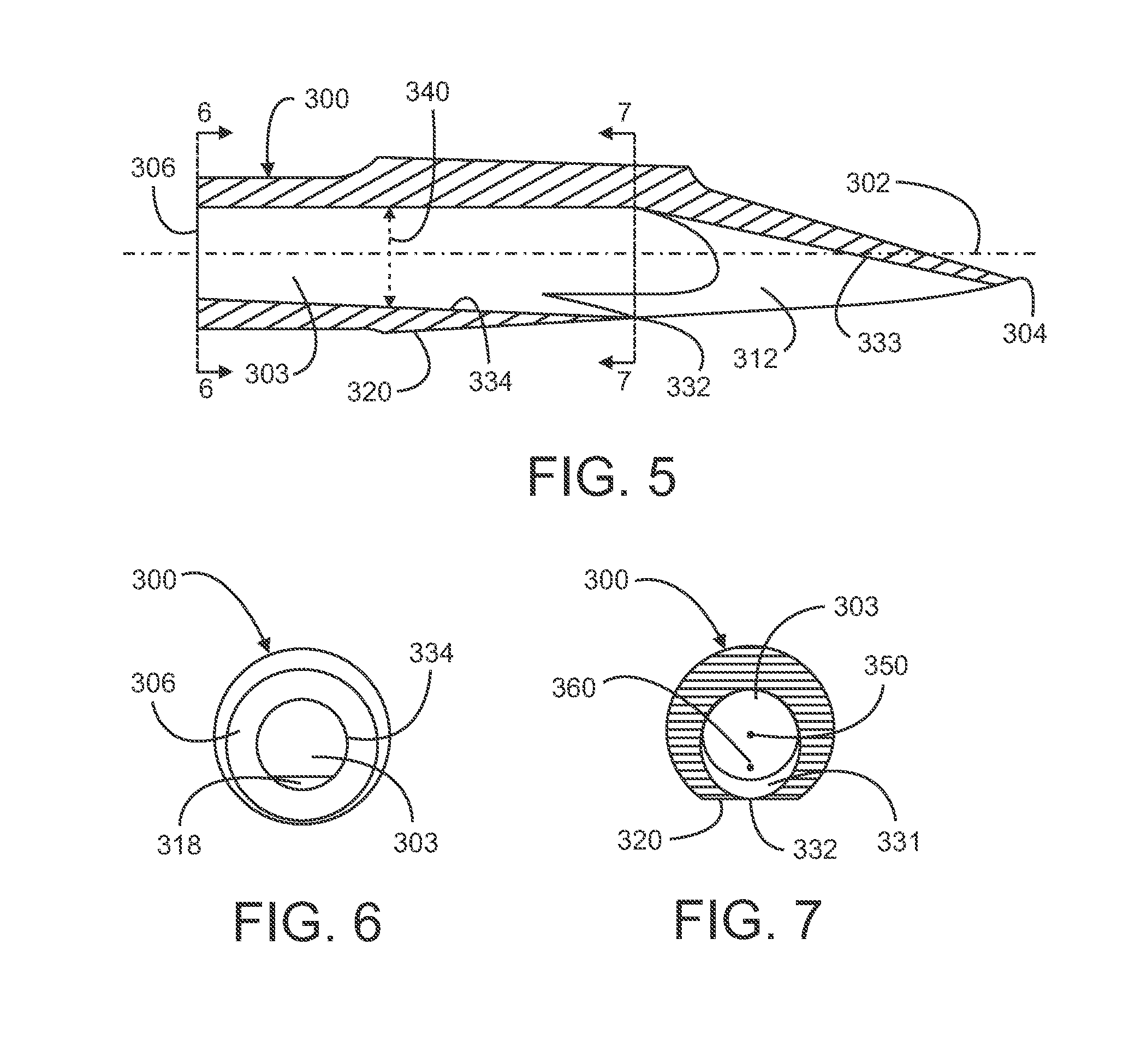Slanted bore mouthpiece
a mouthpiece and slant bore technology, applied in the field of woodwind instruments, can solve the problems of not being able to produce satisfactory good intonation without significant effort, note to be out of tune, and especially severe in hard rubber mouthpieces, so as to reduce the abrupt change in the cross-sectional area, improve intonation, and improve tonality and ease of performance.
- Summary
- Abstract
- Description
- Claims
- Application Information
AI Technical Summary
Benefits of technology
Problems solved by technology
Method used
Image
Examples
Embodiment Construction
[0018]Referring initially to FIG. 1, an exemplary embodiment of a slanted bore mouthpiece 100 for a single reed woodwind instrument in accordance with the present invention is illustrated. In general, the mouthpiece is arranged to support a reed that is secured to the mouthpiece with a ligature. Suitable arrangements of reeds and ligatures are known and available in the art. The slanted bore mouthpiece can be any suitable type of single reed mouthpiece including mouthpieces for clarinets and saxophones. In general, the mouthpiece has a typically elongated or barrel shape that extends along a central axis 102 from a first end 104 to a second end 106. The slanted bore mouthpiece tapers toward the first end, which is the end inserted into the mouth of the player of the woodwind instrument. The second end is typically cylindrical and is shaped to fit on the neck of the woodwind instrument or into the barrel of a clarinet.
[0019]The slanted bore mouthpiece includes an internal tone chambe...
PUM
 Login to View More
Login to View More Abstract
Description
Claims
Application Information
 Login to View More
Login to View More - R&D
- Intellectual Property
- Life Sciences
- Materials
- Tech Scout
- Unparalleled Data Quality
- Higher Quality Content
- 60% Fewer Hallucinations
Browse by: Latest US Patents, China's latest patents, Technical Efficacy Thesaurus, Application Domain, Technology Topic, Popular Technical Reports.
© 2025 PatSnap. All rights reserved.Legal|Privacy policy|Modern Slavery Act Transparency Statement|Sitemap|About US| Contact US: help@patsnap.com



